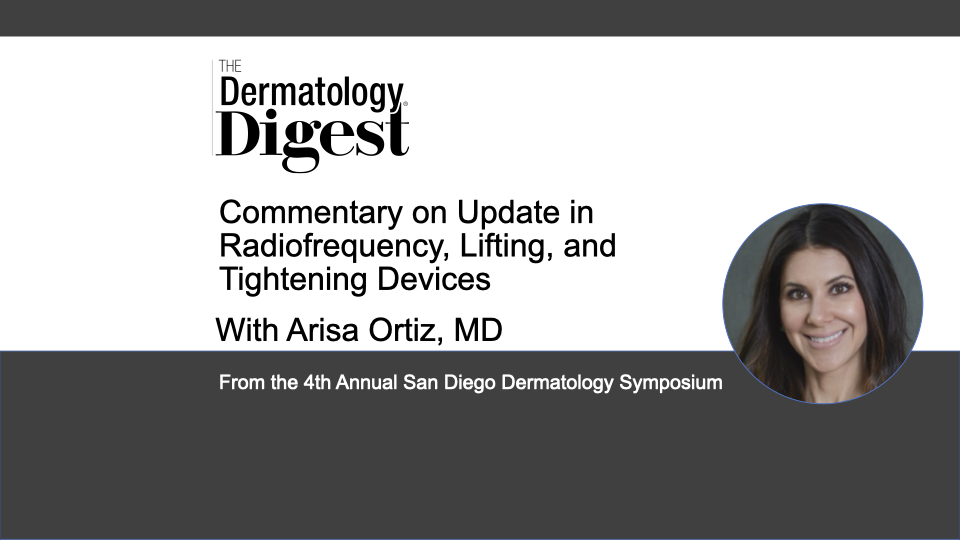Dr. Ortiz discusses the latest options in noninvasive lifting and tightening devices for facial skin, including candidate considerations.
Arisa Ortiz, MD, FAAD, ACMS, Director of Laser and Cosmetics at UC San Diego, San Diego, California, and Vice President, American Society for Laser Medicine & Surgery
“This is an exciting topic because we’ve come a long way. Noninvasive tightening is really popular because many of the devices have little downtime and many patients just don’t want surgery these days,” said Arisa Ortiz, MD, who presented “Update in Radiofrequency, Lifting, and Tightening Devices,” at the San Diego Dermatology Symposium (SDDS) in San Diego, California.
It’s important to tell patients during the consultation, however, that treatment outcomes do not rival those achieved with surgery, said Dr. Ortiz.
“We see some nice improvement but it’s not going to be similar to facelifts.”
If patients describe what they want by physically lifting their midface or cheeks, they likely want a surgical facelift, said Dr. Ortiz.
Skin Tightening Evolves
The original noninvasive tightening device was monopolar radiofrequency, said Dr. Ortiz.
“The protocol has improved over time to improve safety and efficacy. Now we use lower energies and multiple passes for a safer treatment.”
Sofwave (Sofwave Medical; San Clemente, Calif.) is a new and exciting technology for facial skin tightening and lifting, she said.
“This is an improvement in previous ultrasound devices. The newest technology is called Synchronous Ultrasound Parallel Beam Technology.”
According to Dr. Ortiz, “The main difference between this and previous ultrasound devices is the way the heat is laid down in the tissue. It’s a cylindrical pattern that parallels the epidermis. It never approaches the epidermis, so it’s truly safe for all skin types. There is no downtime. There is no urticaria or risk of post-inflammatory hyperpigmentation. There’s no swelling or redness, so patients truly love this as a lunchtime procedure if they’re trying to keep what procedures they’ve had done discreet.”
Because of the coagulation pattern, dermatology practices can deliver high energies for reproducible results, said Dr. Ortiz.
Tissue Micro-Coring
Tissue micro-coring with the Ellacor device (Cytrellis, Woburn, Mass.) involves removing full-thickness punch biopsy cores of tissue. Because the cores are so small, the treatment leaves no scarring and there’s minimal downtime—a week to two weeks of a little bit of redness, said Dr. Ortiz.
“You’ll hear more about it in the future because … this is the first time that we’ve been able to remove loose skin nonsurgically, without leaving any scars. You remove thousands of cores with each treatment.”
While Ellacor was recently approved and has been tested in some darker skin types it has yet to have adequate data on skin types 5 and 6, said Dr. Ortiz.
“We’re looking into the safety of this device in darker skin types. There may be a risk of post-inflammatory hyperpigmentation in these patients, so we definitely need to look into that. I think because it doesn’t deliver any heat there is some promise in using this device in skin of color, but we are currently investigating its limits.”
Disclosures: Dr. Ortiz is on the advisory board for Sofwave and Ellacor and has received honoraria from both companies.


